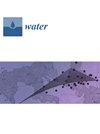Using Multi-Source Data to Assess the Hydrologic Alteration and Extremes under a Changing Environment in the Yalong River Basin
IF 3
3区 环境科学与生态学
Q2 ENVIRONMENTAL SCIENCES
引用次数: 1
Abstract
Climate change and human activities are two important factors in the changing environment that affect the variability of the hydrological cycle and river regime in the Yalong River basin. This paper analyzed the hydrological alteration and extremes in the Yalong River basin based on multi-source satellite data, and projected the hydrological response under different future climate change scenarios using the CwatM hydrological model. The results show that: (1) The overall change in hydrological alteration at Tongzilin station was moderate during the period of 1998–2011 and severe during the period of 2012–2020. (2) Precipitation (average 781 mm/a) is the dominant factor of water cycle on a monthly scale, which can explain the temporal variability of runoff, evaporation, and terrestrial water storage, while terrestrial water storage is also simultaneously regulated by runoff and evaporation. (3) The GRACE data are comparable with regional water resource bulletins. The terrestrial water storage is mainly regulated by surface water (average 1062 × 108 m3), while the contribution of groundwater (average 298 × 108 m3) is relatively small. (4) The evaporation and runoff processes will intensify in the future due to climate warming and increasing precipitation (~10%), and terrestrial water storage will be depleted. The magnitude of change will increase with the enhancement of emission scenarios.利用多源资料评价雅砻江流域变化环境下的水文变化及其极值
气候变化和人类活动是影响雅砻江流域水文循环和河势变化的两个重要因素。基于多源卫星数据分析了雅砻江流域的水文变化和极端情况,并利用CwatM水文模型预测了未来不同气候变化情景下的水文响应。结果表明:(1)桐梓林站1998~2011年水文变化总体呈中度变化,2012~2020年水文变化严重。(2) 降水量(平均781mm/a)是月尺度水循环的主导因素,它可以解释径流、蒸发和陆地蓄水的时间变化,而陆地蓄水也同时受到径流和蒸发的调节。(3) GRACE数据与区域水资源公报具有可比性。地表水(平均1062×108m3)主要调节陆地蓄水量,而地下水(平均298×108 m3)的贡献相对较小。(4) 由于气候变暖和降水量增加(~10%),未来蒸发和径流过程将加剧,陆地蓄水将耗尽。变化幅度将随着排放情景的增强而增加。
本文章由计算机程序翻译,如有差异,请以英文原文为准。
求助全文
约1分钟内获得全文
求助全文
来源期刊

Water
WATER RESOURCES-
CiteScore
5.80
自引率
14.70%
发文量
3491
审稿时长
19.85 days
期刊介绍:
Water (ISSN 2073-4441) is an international and cross-disciplinary scholarly journal covering all aspects of water including water science and technology, and the hydrology, ecology and management of water resources. It publishes regular research papers, critical reviews and short communications, and there is no restriction on the length of the papers. Our aim is to encourage scientists to publish their experimental and theoretical research in as much detail as possible. Full experimental and/or methodical details must be provided for research articles. Computed data or files regarding the full details of the experimental procedure, if unable to be published in a normal way, can be deposited as supplementary material.
 求助内容:
求助内容: 应助结果提醒方式:
应助结果提醒方式:


